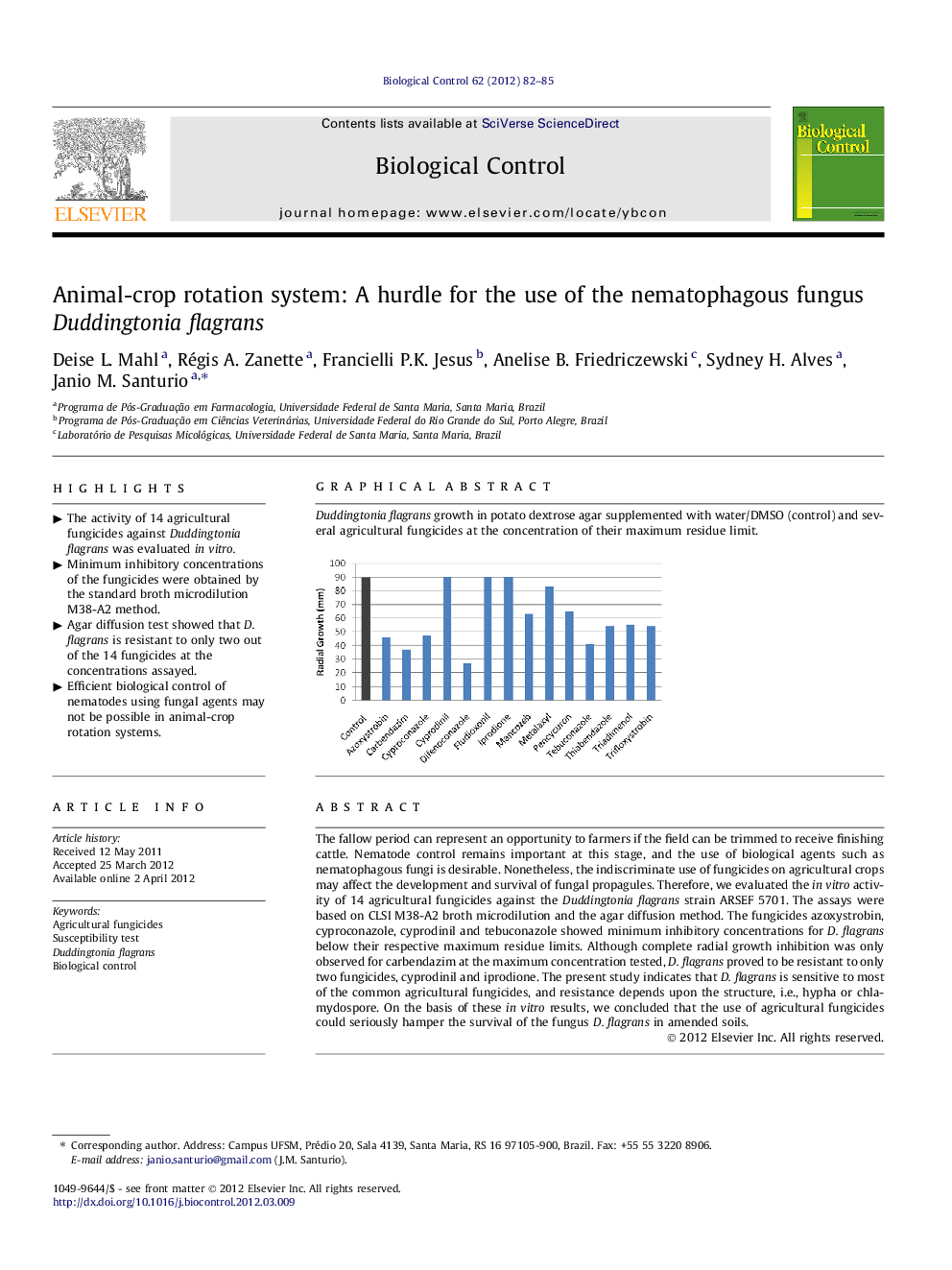| Article ID | Journal | Published Year | Pages | File Type |
|---|---|---|---|---|
| 4504101 | Biological Control | 2012 | 4 Pages |
The fallow period can represent an opportunity to farmers if the field can be trimmed to receive finishing cattle. Nematode control remains important at this stage, and the use of biological agents such as nematophagous fungi is desirable. Nonetheless, the indiscriminate use of fungicides on agricultural crops may affect the development and survival of fungal propagules. Therefore, we evaluated the in vitro activity of 14 agricultural fungicides against the Duddingtonia flagrans strain ARSEF 5701. The assays were based on CLSI M38-A2 broth microdilution and the agar diffusion method. The fungicides azoxystrobin, cyproconazole, cyprodinil and tebuconazole showed minimum inhibitory concentrations for D. flagrans below their respective maximum residue limits. Although complete radial growth inhibition was only observed for carbendazim at the maximum concentration tested, D. flagrans proved to be resistant to only two fungicides, cyprodinil and iprodione. The present study indicates that D. flagrans is sensitive to most of the common agricultural fungicides, and resistance depends upon the structure, i.e., hypha or chlamydospore. On the basis of these in vitro results, we concluded that the use of agricultural fungicides could seriously hamper the survival of the fungus D. flagrans in amended soils.
Graphical abstractDuddingtonia flagrans growth in potato dextrose agar supplemented with water/DMSO (control) and several agricultural fungicides at the concentration of their maximum residue limit.Figure optionsDownload full-size imageDownload as PowerPoint slideHighlights► The activity of 14 agricultural fungicides against Duddingtonia flagrans was evaluated in vitro. ► Minimum inhibitory concentrations of the fungicides were obtained by the standard broth microdilution M38-A2 method. ► Agar diffusion test showed that D. flagrans is resistant to only two out of the 14 fungicides at the concentrations assayed. ► Efficient biological control of nematodes using fungal agents may not be possible in animal-crop rotation systems.
